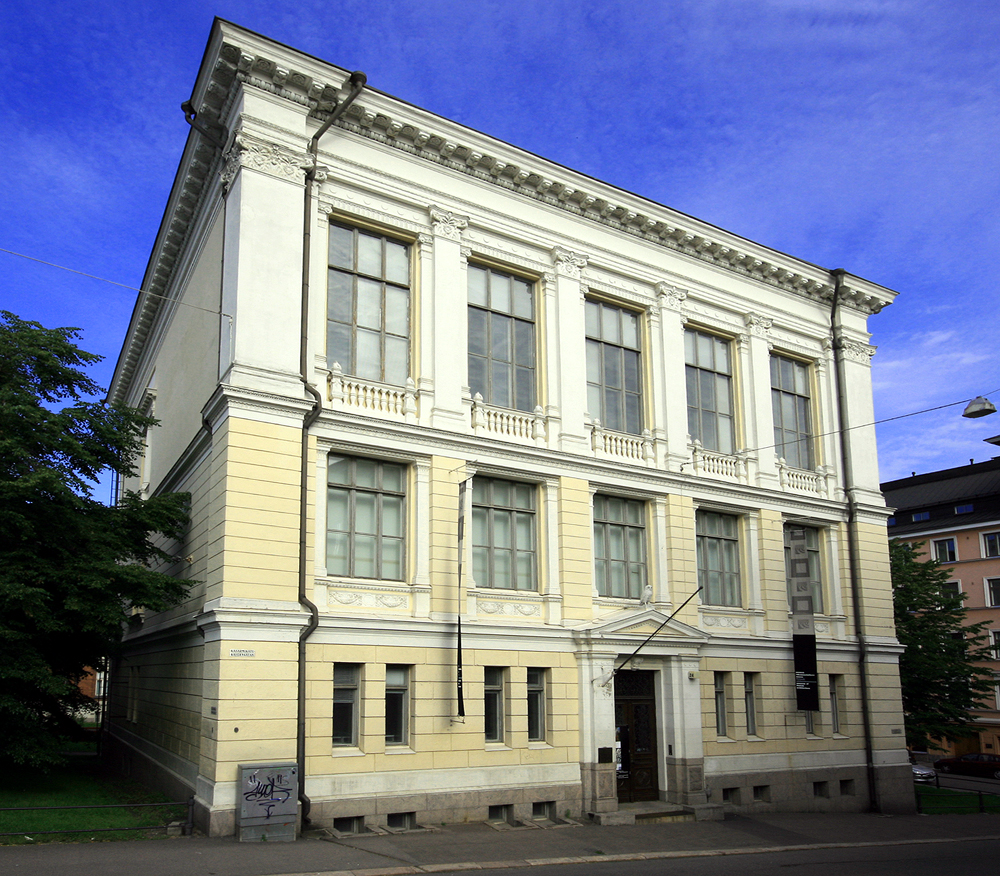Museum Of Finnish Architecture on:
[Wikipedia]
[Google]
[Amazon]
 The Museum of Finnish Architecture ( fi, Suomen arkkitehtuurimuseo, sv, Finlands arkitekturmuseum) is an architectural
The Museum of Finnish Architecture ( fi, Suomen arkkitehtuurimuseo, sv, Finlands arkitekturmuseum) is an architectural
 The Museum of Finnish Architecture ( fi, Suomen arkkitehtuurimuseo, sv, Finlands arkitekturmuseum) is an architectural
The Museum of Finnish Architecture ( fi, Suomen arkkitehtuurimuseo, sv, Finlands arkitekturmuseum) is an architectural museum
A museum ( ; plural museums or, rarely, musea) is a building or institution that cares for and displays a collection of artifacts and other objects of artistic, cultural, historical, or scientific importance. Many public museums make thes ...
in Helsinki
Helsinki ( or ; ; sv, Helsingfors, ) is the capital, primate, and most populous city of Finland. Located on the shore of the Gulf of Finland, it is the seat of the region of Uusimaa in southern Finland, and has a population of . The city ...
, Finland
Finland ( fi, Suomi ; sv, Finland ), officially the Republic of Finland (; ), is a Nordic country in Northern Europe. It shares land borders with Sweden to the northwest, Norway to the north, and Russia to the east, with the Gulf of B ...
. Established in 1956, it is the second oldest museum of its kind (after the Shchusev Museum of Architecture
The ShchusevThe official site of the museum prefers the spelling ''Schusev''. Museum of Architecture is a national museum of Russian Architecture located in Moscow the capital of Russia and also a research centre to study and promote the architec ...
in Moscow
Moscow ( , US chiefly ; rus, links=no, Москва, r=Moskva, p=mɐskˈva, a=Москва.ogg) is the capital and largest city of Russia. The city stands on the Moskva River in Central Russia, with a population estimated at 13.0 millio ...
) devoted specifically to architecture. The museum was founded on the basis of the photographic collection of the Finnish Association of Architects (SAFA), which was established in 1949.
The museum is on Kasarmikatu street in Ullanlinna
(; sv, Ulrikasborg) is a city district of Helsinki, in Finland. The name ''Ullanlinna'' ( en, "Ulla's Castle") refers to the fortification line that was built at the southern edge of the area during the 18th century (no longer visible), as part ...
, housed in a neo-classical building, designed by architect Magnus Schjerfbeck
Magnus Schjerfbeck (24 July 1860 — 8 May 1933) was a Finnish architect and architectural historian.
Education
Schjerfbeck studied at the Polytechnical Institute of Finland (later Helsinki University of Technology, now part of Aalto Universit ...
and completed in 1899. The building was originally in the use of a scientific society and the University of Helsinki
The University of Helsinki ( fi, Helsingin yliopisto, sv, Helsingfors universitet, abbreviated UH) is a public research university located in Helsinki, Finland since 1829, but founded in the city of Turku (in Swedish ''Åbo'') in 1640 as the ...
. The museum took over use of the building in 1981, before which it had been housed in a former wooden pavilion in Kaivopuisto
Kaivopuisto ( sv, Brunnsparken), nicknamed ''Kaivari'' in Finnish or ''Brunsan'' in Swedish, is one of the oldest and best known parks in central Helsinki, Finland, and also a neighbourhood of about 500 inhabitants where the park is located.
Geo ...
Park. Occupying the same city block as the Museum of architecture is the Design Museum. In 1984 an architectural competition
An architectural design competition is a type of design competition in which an organization that intends on constructing a new building invites architects to submit design proposals. The winning design is usually chosen by an independent panel ...
was arranged for a new building to be built in the gap between the two buildings, this linking them together as a single institution. The competition was won by architects Helin and Siitonen, but the project was abandoned soon afterwards, due to logistics and problems of finance. The building is currently owned by the State of Finland through Senate Properties.
The museum has large collections of drawings, photographs and architectural scale models. It also has its own library and bookstore. The museum organises exhibitions on both Finnish and foreign architecture as well as exhibitions on Finnish architecture for touring abroad. It also publishes its own books.
Although independent of SAFA and its journal ''The Finnish Architectural Review'' (ARK), the museum is seen, along with these, as the key influence in continuously promoting modern architecture
Modern architecture, or modernist architecture, was an architectural movement or architectural style based upon new and innovative technologies of construction, particularly the use of glass, steel, and reinforced concrete; the idea that for ...
in Finland. This policy has been promoted vigorously abroad and sponsored by the Finnish Ministry of Foreign Affairs and Ministry of education.
See also
*Architecture of Finland
The architecture of Finland has a history spanning over 800 years, and while up until the modern era the architecture was strongly influenced by currents from Finland's two respective neighbouring ruling nations Sweden and Russia, from the early ...
References
* Petra Ceferin, ''Constructing a Legend. The International Exhibitions of Finnish Architecture 1957–1967''. Helsinki, SKS, 2005. * Roger Connah, ''The Piglet Years. The Lost Militancy in Finnish Architecture''. Tampere, Datutop, 2006. * Pekka Korvenmaa (ed.), ''The Work of Architects: The Finnish Association of Architects 1892–1992''. Helsinki, The Finnish Association of Architects, 1992.External links
* {{authority control Museums in Helsinki Art museums and galleries in Finland Architecture museums Architecture in Finland Modernist architecture in Finland Neoclassical architecture in Finland Art museums established in 1956 1956 establishments in Finland Kaartinkaupunki